The Szentesi paradicsom tomato production is utilising high tech-greenhouses and modern Dutch technology to meet the growing demand for produce in eastern Europe.
The Irish Farmers Journal visited one of the 8.9-acre greenhouses while on an agricultural press tour of Hungary.
The company was founded in 2013 and became operational in 2014, growing to 30.8 acres of land on four different sites, employing 180 people. This puts the company in the top six of tomato productions in the country.
The tomato production is based inside an air conditioned irrigation-controlled greenhouse of Dutch technology.
Szentesi paradicsom owner and managing director Dr Magdolna Katona said being part of the DélkerTESZ producer organisation allows them to try out new technologies.

Although this greenhouse seems large, four to six hectares is becoming the standard size of greenhouses in Hungary. \ James Hanly
"We sometimes disagree over prices, but our relationship with the producer organisations is good,” she said.
“They give us funding for technology. Like most recently, they gave us a drone to clean the outside of the greenhouse. Now we're training our workers to fly drones.”
Production
The growers receive their seeds from their co-operative, which are imported from the Netherlands and don’t contain genetically modified organisms (GMOs).
Their main production is bunches of tomatoes, of which they produced over 4.95 million kilogrammes in 2023.
The Szentesi production also produces over 530,000kg of cocktail tomatoes and over 260,000kg of cherry tomatoes each year.

The Szentesi production also produces over 530,000kg of cocktail tomatoes and over 260,000kg of cherry tomatoes each year. \ James Hanly
Dr Katona added that the company saves significant money on manpower by providing to the co-op.
“We do not have to invest in a large warehouse and handling equipment and we don’t have to develop trade stuff and market entry activities to cope with the increasing volume of goods.

Szentesi paradicsom is in the middle of constructing a 6ha greenhouse next to its existing building. \ James Hanly
“Of course, there is a cost to this, but we would have to pay it, perhaps several times over, as we operate four sites.”
Technology
The highlight of the Hungarian company’s high-tech greenhouse is the PRIVA air conditioning with computerised heating and irrigation control.
The three-loop heating system, which includes a high-pressure humidifier and air cooler - depending on the season - is powered by geothermal energy. Added electrical energy consumption is reduced with solar panels.

The three-loop heating system is ideally kept at 60% to 65% humidity in the greenhouse. \ James Hanly
To improve cultivation and pollination, the workers have introduced mites, wasps, bumblebees and flies to the greenhouse.
In addition, due to the tough nature of controlling diseases and pests in soils, the tomatoes are cultivated in coconut fibres and rockwool hanging trays.

Due to the tough nature of controlling diseases and pests in soils, the tomatoes are cultivated in coconut fibres and rockwool hanging trays. \ James Hanly

The DG Agri press trip in the Hungarian tomato greenhouse. \ James Hanly
“We use this in order to make sure that the plant grows in optimal conditions. That means we can combat viruses, bacteria, fungi, etc,” said garden engineer István Oltyán.
Read more
Commissioner designate to incentivise animal welfare initiatives
Hungarian government tackles farmers' historic mistrust of co-ops
The Szentesi paradicsom tomato production is utilising high tech-greenhouses and modern Dutch technology to meet the growing demand for produce in eastern Europe.
The Irish Farmers Journal visited one of the 8.9-acre greenhouses while on an agricultural press tour of Hungary.
The company was founded in 2013 and became operational in 2014, growing to 30.8 acres of land on four different sites, employing 180 people. This puts the company in the top six of tomato productions in the country.
The tomato production is based inside an air conditioned irrigation-controlled greenhouse of Dutch technology.
Szentesi paradicsom owner and managing director Dr Magdolna Katona said being part of the DélkerTESZ producer organisation allows them to try out new technologies.

Although this greenhouse seems large, four to six hectares is becoming the standard size of greenhouses in Hungary. \ James Hanly
"We sometimes disagree over prices, but our relationship with the producer organisations is good,” she said.
“They give us funding for technology. Like most recently, they gave us a drone to clean the outside of the greenhouse. Now we're training our workers to fly drones.”
Production
The growers receive their seeds from their co-operative, which are imported from the Netherlands and don’t contain genetically modified organisms (GMOs).
Their main production is bunches of tomatoes, of which they produced over 4.95 million kilogrammes in 2023.
The Szentesi production also produces over 530,000kg of cocktail tomatoes and over 260,000kg of cherry tomatoes each year.

The Szentesi production also produces over 530,000kg of cocktail tomatoes and over 260,000kg of cherry tomatoes each year. \ James Hanly
Dr Katona added that the company saves significant money on manpower by providing to the co-op.
“We do not have to invest in a large warehouse and handling equipment and we don’t have to develop trade stuff and market entry activities to cope with the increasing volume of goods.

Szentesi paradicsom is in the middle of constructing a 6ha greenhouse next to its existing building. \ James Hanly
“Of course, there is a cost to this, but we would have to pay it, perhaps several times over, as we operate four sites.”
Technology
The highlight of the Hungarian company’s high-tech greenhouse is the PRIVA air conditioning with computerised heating and irrigation control.
The three-loop heating system, which includes a high-pressure humidifier and air cooler - depending on the season - is powered by geothermal energy. Added electrical energy consumption is reduced with solar panels.

The three-loop heating system is ideally kept at 60% to 65% humidity in the greenhouse. \ James Hanly
To improve cultivation and pollination, the workers have introduced mites, wasps, bumblebees and flies to the greenhouse.
In addition, due to the tough nature of controlling diseases and pests in soils, the tomatoes are cultivated in coconut fibres and rockwool hanging trays.

Due to the tough nature of controlling diseases and pests in soils, the tomatoes are cultivated in coconut fibres and rockwool hanging trays. \ James Hanly

The DG Agri press trip in the Hungarian tomato greenhouse. \ James Hanly
“We use this in order to make sure that the plant grows in optimal conditions. That means we can combat viruses, bacteria, fungi, etc,” said garden engineer István Oltyán.
Read more
Commissioner designate to incentivise animal welfare initiatives
Hungarian government tackles farmers' historic mistrust of co-ops










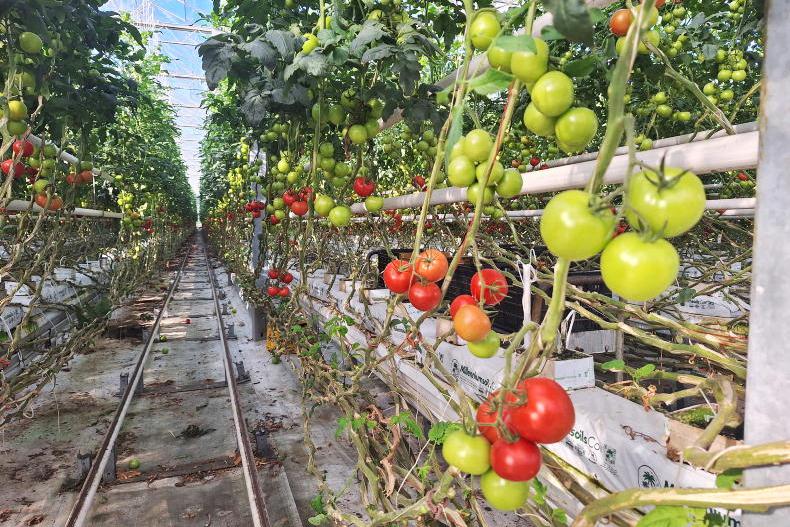
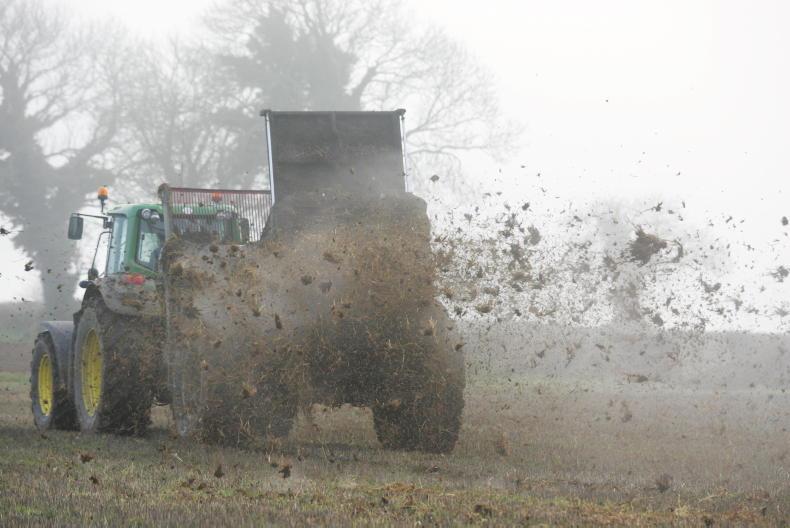

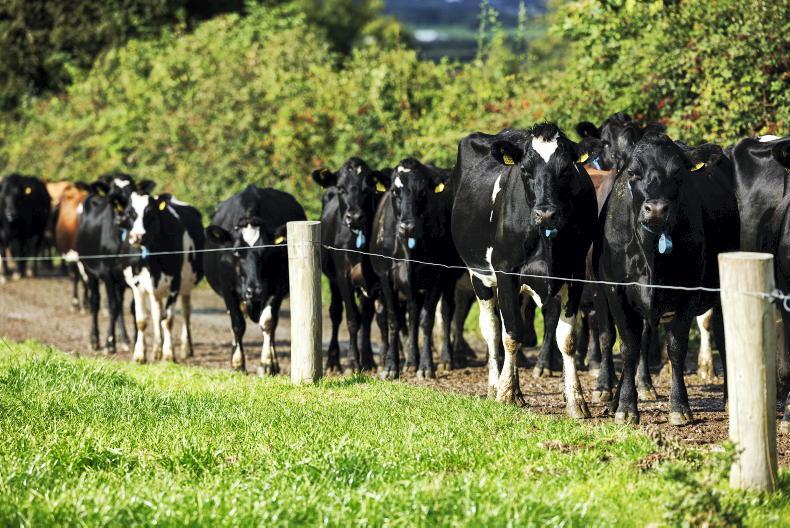
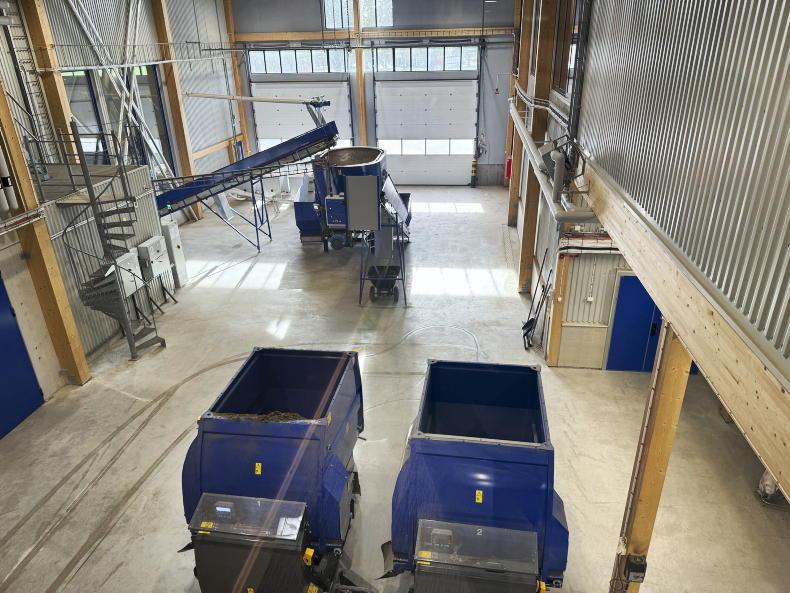
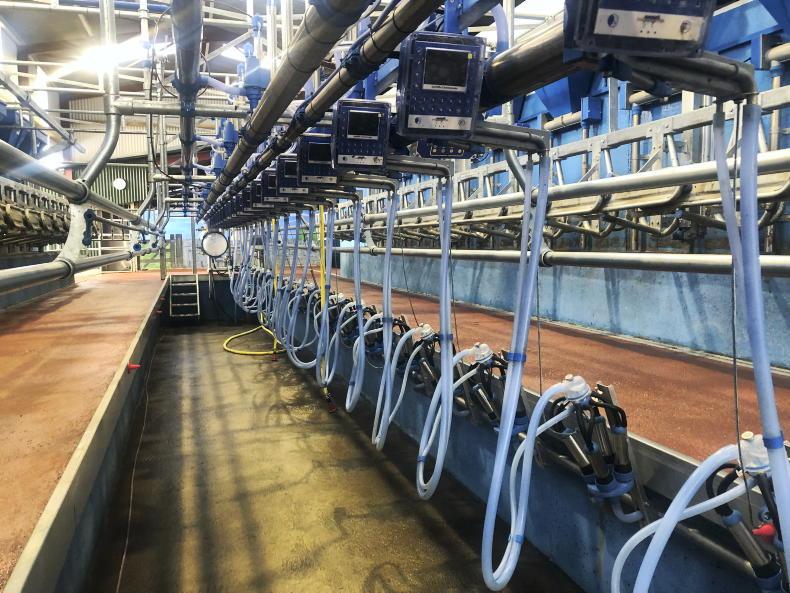
SHARING OPTIONS